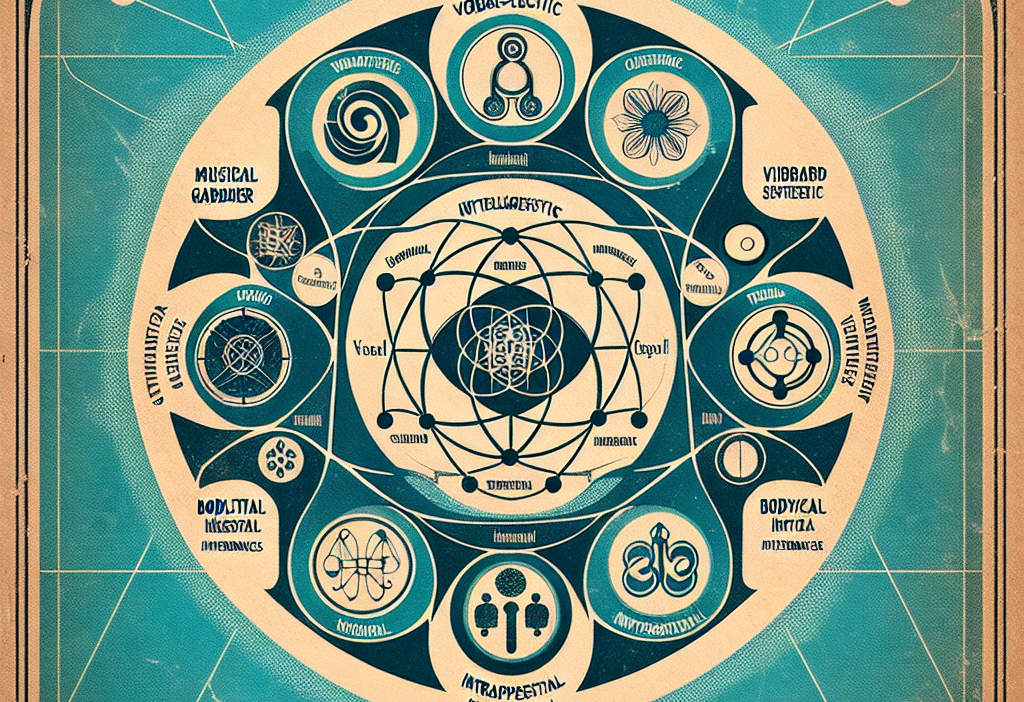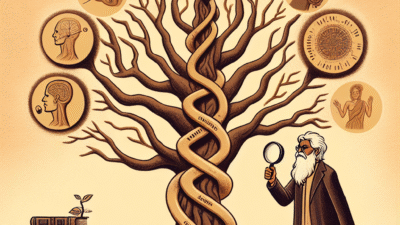Introduction
In a world that often equates intelligence with IQ scores, the conversation around what it truly means to be "intelligent" is evolving. The traditional view of intelligence as a singular, quantifiable entity is being challenged by more nuanced theories that recognize the diverse ways in which individuals learn and excel. Two of the most influential frameworks in this discourse are Howard Gardner’s Multiple Intelligences and Robert Sternberg’s Triarchic Theory of Intelligence.
This article aims to provide a comprehensive analysis of these two theories, exploring their similarities, differences, and practical applications. By delving into the intricacies of Gardner’s and Sternberg’s models, we will uncover how they expand our understanding of intelligence beyond mere IQ. Whether you’re an educator, a parent, or simply someone interested in the psychology of learning, this comparative analysis will offer valuable insights and actionable takeaways.
Understanding Gardner’s Multiple Intelligences
The Theory Explained
Howard Gardner introduced the theory of Multiple Intelligences in his 1983 book, Frames of Mind. He proposed that intelligence is not a single entity but rather a collection of distinct modalities. Gardner initially identified seven intelligences, later expanding the list to include nine:
- Linguistic Intelligence: The ability to use language effectively, whether in writing or speaking.
- Logical-Mathematical Intelligence: The capacity for deductive reasoning, problem-solving, and mathematical calculations.
- Spatial Intelligence: The ability to visualize and manipulate objects in space.
- Musical Intelligence: The skill in performance, composition, and appreciation of musical patterns.
- Bodily-Kinesthetic Intelligence: The capacity to use one’s body effectively for expressive or goal-oriented purposes.
- Interpersonal Intelligence: The ability to understand and interact effectively with others.
- Intrapersonal Intelligence: The capacity for self-awareness and self-reflection.
- Naturalistic Intelligence: The ability to recognize and categorize plants, animals, and other aspects of the natural world.
- Existential Intelligence: The sensitivity to deep questions about human existence, such as the meaning of life.
Practical Applications
Gardner’s theory has profound implications for education. By recognizing that students have different types of intelligences, educators can tailor their teaching methods to accommodate diverse learning styles. For example:
- Linguistic learners might benefit from reading and writing assignments.
- Bodily-kinesthetic learners may excel in hands-on activities and physical education.
- Interpersonal learners thrive in group projects and discussions.
Critiques and Limitations
While Gardner’s theory has gained widespread acceptance, it has also faced criticism. Some argue that the intelligences are not entirely distinct and that they overlap significantly. Others question the empirical evidence supporting the existence of these intelligences. Nevertheless, Gardner’s framework has opened up new avenues for understanding human potential.
Exploring Sternberg’s Triarchic Theory
The Theory Explained
Robert Sternberg introduced his Triarchic Theory of Intelligence in the 1980s, positing that intelligence comprises three interrelated components:
- Analytical Intelligence: This involves problem-solving abilities, critical thinking, and the capacity to analyze information.
- Creative Intelligence: This refers to the ability to generate new ideas, think outside the box, and adapt to novel situations.
- Practical Intelligence: Often described as "street smarts," this component involves the ability to apply knowledge to real-world scenarios and navigate everyday challenges.
Practical Applications
Sternberg’s theory emphasizes the importance of creativity and practical skills alongside analytical abilities. In educational settings, this can translate to:
- Encouraging creative projects that allow students to express their ideas.
- Teaching problem-solving skills through real-life scenarios.
- Fostering environments where practical intelligence can flourish, such as internships or community service projects.
Critiques and Limitations
Sternberg’s Triarchic Theory has also faced scrutiny. Critics argue that the components may not be as distinct as he suggests and that practical intelligence, in particular, is often context-dependent. However, the theory has been influential in reshaping how we view intelligence in educational and professional settings.
Comparative Analysis: Gardner vs. Sternberg
Similarities
Both Gardner’s Multiple Intelligences and Sternberg’s Triarchic Theory challenge the traditional notion of intelligence as a single, fixed attribute. They emphasize that intelligence is multifaceted and can manifest in various forms. Here are some key similarities:
- Diversity of Intelligence: Both theories recognize that individuals possess different types of intelligence, which can be nurtured and developed.
- Educational Implications: Each theory has significant implications for teaching and learning, advocating for personalized approaches to education.
- Focus on Practical Skills: Both frameworks highlight the importance of applying knowledge in real-world contexts, whether through Gardner’s interpersonal intelligence or Sternberg’s practical intelligence.
Differences
Despite their similarities, the two theories diverge in several key areas:
- Number of Intelligences: Gardner identifies multiple distinct intelligences, while Sternberg consolidates intelligence into three broad categories.
- Emphasis on Creativity: Sternberg places a stronger emphasis on creativity as a component of intelligence, whereas Gardner’s framework is more focused on different modalities of learning.
- Theoretical Foundations: Gardner’s theory is rooted in developmental psychology and education, while Sternberg’s work draws from cognitive psychology and practical applications.
Visualizing the Theories
Table: Comparison of Multiple Intelligences and Triarchic Theory
| Aspect | Gardner’s Multiple Intelligences | Sternberg’s Triarchic Theory |
|---|---|---|
| Number of Intelligences | 9 | 3 |
| Key Components | Linguistic, Logical-Mathematical, Spatial, Musical, Bodily-Kinesthetic, Interpersonal, Intrapersonal, Naturalistic, Existential | Analytical, Creative, Practical |
| Focus | Diverse modalities of learning | Application of intelligence in real-world contexts |
| Educational Implications | Personalized learning approaches | Emphasis on creativity and practical skills |
Practical Takeaways for Educators and Learners
Tailoring Education to Individual Strengths
Understanding these theories can empower educators to create more inclusive and effective learning environments. Here are some actionable strategies:
- Assess Individual Strengths: Use assessments to identify students’ dominant intelligences and tailor instruction accordingly.
- Diversify Teaching Methods: Incorporate a variety of teaching styles to engage different types of learners. For example, use group discussions for interpersonal learners and hands-on activities for bodily-kinesthetic learners.
- Encourage Creativity: Foster an environment where creative thinking is valued. This can be achieved through project-based learning, brainstorming sessions, and open-ended assignments.
- Real-World Applications: Integrate practical experiences into the curriculum, such as internships, community service, or real-world problem-solving tasks.
Empowering Personal Growth
For individuals seeking to enhance their intelligence, consider the following steps:
- Self-Reflection: Take time to assess your strengths and weaknesses in various intelligences. This can guide your personal and professional development.
- Lifelong Learning: Engage in activities that challenge your less dominant intelligences. For instance, if you excel in logical-mathematical intelligence, try exploring artistic pursuits to develop your musical or spatial intelligence.
- Seek Feedback: Collaborate with others to gain insights into your interpersonal and intrapersonal intelligences. Constructive feedback can help you grow in areas where you may be less confident.
Conclusion
The exploration of intelligence has come a long way from the narrow confines of IQ testing. Both Gardner’s Multiple Intelligences and Sternberg’s Triarchic Theory offer valuable frameworks for understanding the complexities of human intelligence. By recognizing that intelligence is multifaceted and can manifest in various forms, we can create more inclusive educational environments and empower individuals to reach their full potential.
As we move beyond IQ, let us embrace the richness of human intelligence and the diverse ways in which we learn, grow, and contribute to the world.
FAQs
1. What are the main differences between Gardner’s and Sternberg’s theories?
Gardner’s theory identifies multiple distinct intelligences, while Sternberg’s theory consolidates intelligence into three broad categories: analytical, creative, and practical.
2. How can educators apply these theories in the classroom?
Educators can tailor their teaching methods to accommodate different intelligences, encourage creativity, and integrate real-world applications into their curriculum.
3. Are these theories widely accepted in the field of psychology?
While both theories have gained popularity and have influenced educational practices, they have also faced criticism regarding their empirical support and the distinctiveness of the intelligences.
4. Can individuals develop their intelligences over time?
Yes, both Gardner’s and Sternberg’s theories suggest that individuals can nurture and develop their intelligences through targeted practice and learning experiences.
5. How can I assess my own intelligence types?
You can take various online assessments or reflect on your strengths and weaknesses in different areas, such as problem-solving, creativity, and interpersonal skills.
By understanding and applying the insights from Gardner’s Multiple Intelligences and Sternberg’s Triarchic Theory, we can foster a more inclusive and effective approach to education and personal development. Embrace the journey of learning and growth, and remember that intelligence is not a fixed trait but a dynamic and evolving aspect of who we are. 😊



